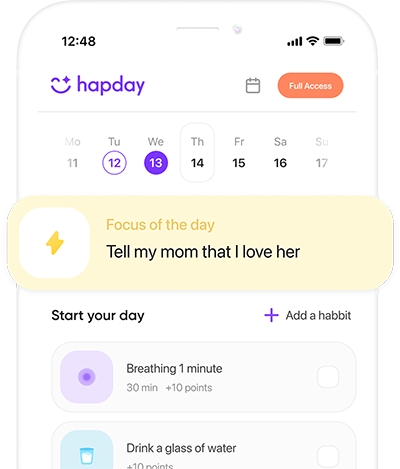Table of Contents
- Understanding Meditation
- Benefits of Meditation
- Popular Meditation Techniques
- Incorporating Meditation into Daily Life
- Conclusion
- References
Understanding Meditation
So, what is meditation, really? It’s like a mind workout routine that revolves around relaxation, focus, and alertness. Imagine it as a mental gym session, or maybe yoga for your brain. Okay, it used to be tied to spiritual and religious rituals, but these days, it’s more like a multi-tool for boosting your mental health and just general well-being. I read somewhere — I think a 2019 piece from the National Center for Complementary and Integrative Health — that about 14.2% of American adults have dipped their toes into meditation. Kinda crazy, right?
At its heart, meditation strives to cultivate a profound sense of self-understanding and peace. And the beauty of it? You can meditate pretty much anywhere without fuss. Equipment-free and open to all. Oh, and did I mention it can clear your mind like nothing else? Just give it a go.
Benefits of Meditation
-
Stress Reduction
Let’s face it—who wouldn’t swoon over a nifty method to melt away stress? Meditation is famous for doing just that. Remember a 2014 study from JAMA Internal Medicine? It pointed out that mindfulness meditation is showing solid proof of dialing down anxiety, depression, and even pain. Something to do with sparking a relaxation response, which calms down cortisol—the notorious stress hormone.
-
Enhanced Mental Clarity
Brain fog—ugh, what a pain! Meditation acts like a feather duster for the mind, brightening focus and sharpening concentration. I heard about this thing from the University of North Carolina, where they claimed that folks who weave meditation into their routines boast better attention spans compared to those who don’t.
-
Improved Emotional Health
Regular meditation might just help us switch out self-doubt for a kinder mirror reflection. Johns Hopkins University waded into these waters and found that mindfulness meditation can dial down some depression symptoms for certain individuals. Seems worth a shot, no?
Popular Meditation Techniques
There is a smorgasbord of meditation methods out there, but for now, let’s cozy up to a few of the tried-and-true ones that excel at soothing frazzled nerves and bringing some headspace clarity.
Mindfulness Meditation
- Technique: Picture this: you’re sitting serene in a quiet zone, focused on your breathing—each in-breath and out-breath. When (not if) your mind strays, kindly guide it back to the breath.
- Benefits: This one’s like a honing tool for awareness, stress-busting, and boosting concentration. Some research in Psychosomatic Medicine says it can even build up gray matter in parts of the brain linked to memory, empathy, and emotional finesse. Impressive, huh?
Transcendental Meditation (TM)
- Technique: The gist is to sit cozy with your eyes closed, echoing a personal mantra in silence. Set aside about 20 minutes, twice a day. I know it might sound like a lot, but folks swear by it.
- Benefits: TM promises lower blood pressure and stress reduction, as touted by the American Journal of Hypertension. Letting your mind slip into a state of calm does wonders for clarity, apparently.
Guided Meditation
- Technique: Whether via recording or a guided session, the guide walks you through crafted mental sceneries. There’s no lack of options on apps or online these days.
- Benefits: It’s tailor-made for beginners, adding structure and focus to your practice. It helps with imagination and emotional processing too. Not bad for an easy start, right?
Loving-Kindness Meditation (Metta)
- Technique: Find your comfy zone and start generating warm thoughts for yourself and others. You might recite positive phrases or sprinkle good vibes around.
- Benefits: In the Journal of Happiness Studies, there’s evidence suggesting this technique ramps up positivity and general well-being.
Incorporating Meditation into Daily Life
Trying to fold meditation into your daily whirliverse? Consistency’s your best ally. Start short—5, maybe 10 minutes daily. Build up as comfort grows. Hapday app anyone? Or, in a pinch, Headspace or Calm could be your go-to for pint-sized sessions on the fly.
Your own quiet pocket at home does wonders too. Set a leisurely, peaceful stage with some greens, candles, maybe even some gentle lighting. Keep distractions at bay, and you’ve got the perfect niche to enhance your practice.
Conclusion
Meditation—it’s not just wishful thinking. A resourceful tool to unwind and sharpen your mental faculties, using scientific backing to boot. Test different techniques, find your groove, and let meditation be an anchor in your quest for a centered lifestyle.
Amid the modern life hustle, meditation is like an inner compass pointing to tranquility and vision. Ready to embark on this soothing adventure? Kick off a stress-free path by diving into meditation techniques today. Find your guide within the Hapday app: Hapday.
References
- National Center for Complementary and Integrative Health. “Meditation: In Depth.” https://nccih.nih.gov/health/meditation/overview.htm
- Goyal, M., Singh, S., Sibinga, E. M., et al. (2014). “Meditation Programs for Psychological Stress and Well-being: A Systematic Review and Meta-analysis.” JAMA Internal Medicine. https://jamanetwork.com/journals/jamainternalmedicine/fullarticle/1809754
- Zeidan, F., Johnson, S. K., Diamond, B. J., et al. (2010). “Mindfulness Meditation Improves Cognition: Evidence of Brief Mental Training.” Consciousness and Cognition. https://doi.org/10.1016/j.concog.2010.03.006
- Hoge, E. A., et al. (2013). “Effect of Mindfulness Meditation on Anxiety in Adults.” Psychosomatic Medicine. https://doi.org/10.1097/PSY.0b013e3182a6a26c
- Fredrickson, B. L., et al. (2008). “Open hearts build lives: Positive emotions, induced through loving-kindness meditation, build consequential personal resources.” Journal of Happiness Studies. https://doi.org/10.1007/s10902-006-9019-0

